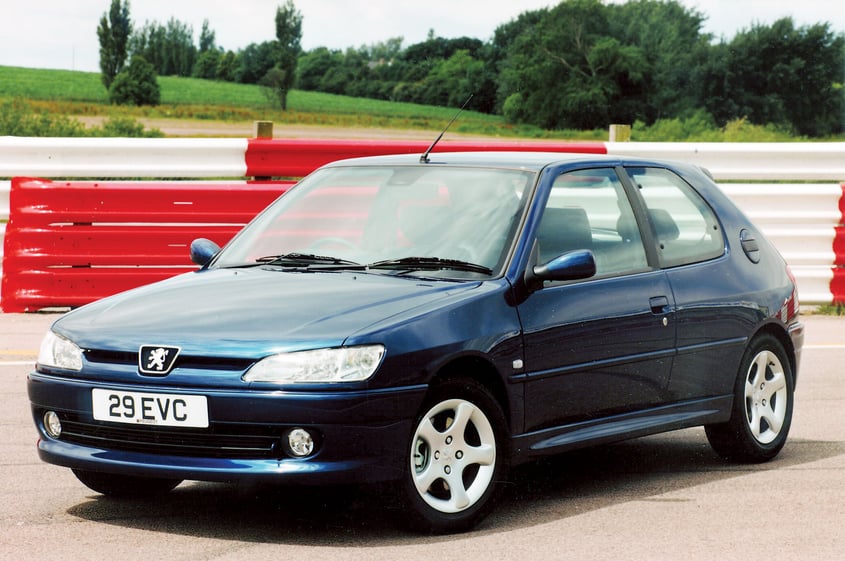
Time is the truest test of a car’s styling. What can look exciting and fresh can look dated and just plain awful a decade or more down the track. But some cars have looks that are essentially timeless. Peugeot’s 1990s supermini, the 306, is one of them; well cared-for and nicely presented, it can look as fresh and as chic as it did a decade ago.
When it arrived here, the 306 caused quite a stir, not least because of its fresh, attractive styling – a welcome departure from the fuddy-duddy looks of its predecessor, the 309. In five-door form, the new French hatchback looked classy; as a three-door with sporty appendages, it was seductive; as a two-door cabriolet, it proved a chic summer getabout. Other variants included a bland, booted four-door sedan and a useful load-lugging wagon; neither set pulses racing and sales were nowhere near those of the popular hatches.
All engines in the 306 range were four-cylinders. The entry-level 306 XN had a 1360cc 55kW motor and it was priced at $28,500 in 1997. It was only available with a five-speed manual transmission. An automatic was a $3000 option on the mid-range 306 XR (1760cc, 72kW) and the cabriolet, which shared the 1760cc motor. The convertible was available with two levels of specification, which were an eye-watering $10,000 apart – Spec 2 with an auto box saw buyers parting with $63,000.
The sporty three-doors included the XSi with a 97kW 2.0-litre, eight-valve engine and the rapid S16 with a 110kW version of the XSi’s 1998cc motor. In 1997, the XSi could be bought as a five-door hatch at a price of $47,000 or $50,000 with the auto box – the same price as the S16. Rounding out the range was the frugal 306 XRdt with its excellent, if noisy, 1905cc turbodiesel.
The Peugeot-specific initials – XN, XR, etc – made the 306 range sound quite unsexy, which it certainly wasn’t. The hatchback was widely held to offer the best driving dynamics in its class with a great combination of suppleness and balanced handling. Even with a paltry 1.4 litres, the 306 could reward drivers with a colourful experience behind the wheel and those Pininfarina-inspired lines just made it a bit more special. In 1997 the range received a freshen-up with a new nose treatment, some interior re-sculpting, the introduction of 16-valve petrol engines and a variety of detail changes. But many aspects of the range remained very ordinary, especially inside where hard plastics predominated and switches and controls had a flimsy, plasticky feel to them. Manual gearchanges that felt loose and clonky strengthened the impression that attention to overall quality was a little half-hearted. In 1998, the S16 gave way to the 125kW GTI with its six-speed close-ratio gearbox and uprated engine. The cabriolet moved up to 2.0-litre, 98kW power and in late 1999, the venerable1905cc turbodiesel unit was replaced by a new 2.0-litre common-rail oil-burner, badged HDI.
On the road
The Peugeot 306 can be a rollicking good drive – few small cars from the ’90s feel as confidently planted on the road while allowing drivers such a big say in how to handle a corner.
The 1.4 has just enough poke to be fun, but despite multi-point fuel injection, accelerator response can be disappointingly flat and revving the 8-valve engine hard sees it become coarse and boomy. The 1760cc motor is better suited to a 1050kg car and it hauls the 306 along with plenty of energy. Both cars share MacPherson struts at the front with lower wishbones and coil springs. At the back, it’s trailing arms with torsion bars and an anti-roll bar. The rack and pinion steering is power-assisted with 3.2 turns lock to lock.
Further up the range, the XSi offers some scruff-of-the-neck thrills with good throttle response, a free-revving attitude and firm, flat and fluid handling. With two-litre capacity, drivers can really exploit the agile 306 chassis and enjoy the fluency of the ride. The brakes are also set up to provide a driver with quick answers. As a five-door, the XSI offers accommodation to match its ability but some will still find the cabin dull and cheap-feeling.
The GTi-6 really turns up the heat and, when extended, is an even more hectic performer than the very sharp S16. The close-ratio gearbox means a driver’s hand is seldom separated from the gearlever and the engine requires decent revs to truly deliver its on-paper promise. Handling, again, is very lively and there is the possibility of lift-off oversteer in corners.
The convertibles, especially the two-litre cars, are also a hoot to drive and scuttle shake – the usual drop-top bugbear – is not all that pronounced. The turbodiesel models impress with their torque-rich engines and ultra-frugal fuel consumption. The early turbodiesel was a clattery affair but the later common-rail HDi unit is harder to fault with its greater efficiency and refinement.